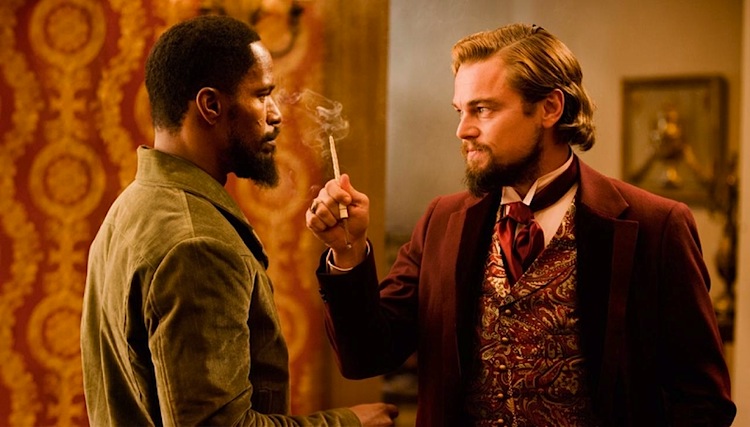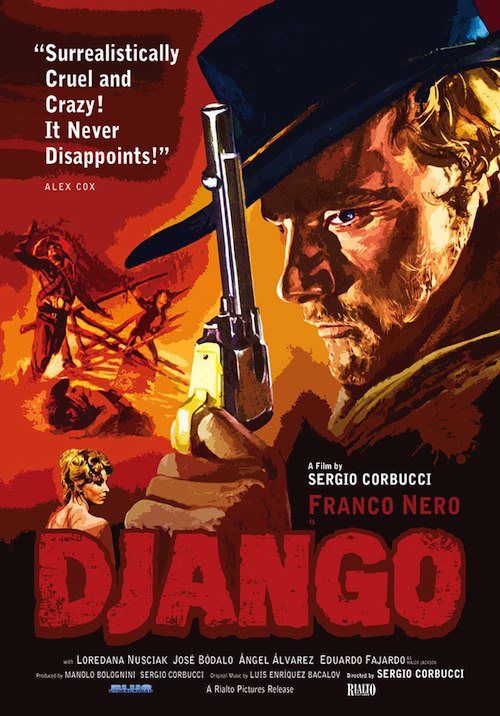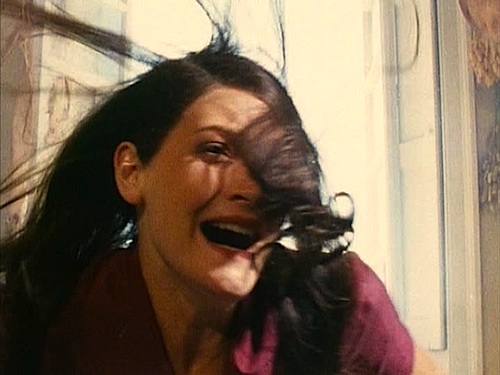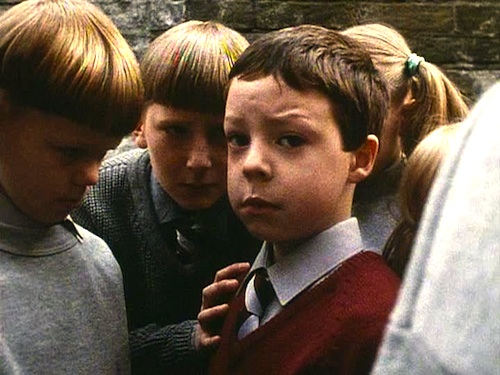By Joe Bendel. The real question is where’s the Gatling gun? The nineteenth century machine gun certainly found its way into Sukiyaki Western Django, Takeshi Miike’s homage to Sergio Corbucci’s spaghetti western, Django. Considering the shtickiness of his supporting performance in Miike’s film, Quentin Tarantino has good reason to distinguish his Django pastiche from its predecessor. This he surely does, re-conceiving the gritty western as a blaxploitation revenge beatdown. Frontier justice gets a whole new look in Django Unchained, which opens Christmas Day nationwide.
Dr. King Schultz is no ordinary dentist. The German expat has taken up the more lucrative work of bounty hunting. He also finds slavery appalling, so he has no qualms about liberating a slave to help him track down the Brittle Brothers, three of his former overseers who are now wanted by the law. That slave is Django, and when he teams up with Schultz, the Brittles do not stand a chance.
As everyone knows from Unchained’s media campaign, Django embraces bounty hunting because he gets paid to kill white people. However, he and Schultz make good partners, even becoming friends. After a profitable winter of killing outlaws, Schultz agrees to help the freeman liberate his wife, Broomhilda, who was taught German by her homesick former owner. Unfortunately, she was recently purchased by Calvin Candie, the master of the notorious Candyland plantation. A bit of subterfuge will be required to buy Broomhilda’s freedom, but Shultz has a suitably dubious plan.
They will masquerade as a prospective slave fight promoter and his free “Mandingo” advisor looking to buy one of Candie’s brawlers. Of course, the white racists of Candyland have trouble dealing with Django on civil terms, but the promise of Schultz’s cash keeps them temporarily in check. Unfortunately, Stephen (as in Fetchit?), the head house slave is instantly suspicious of Django and his partner.
The weird racial undercurrents detectable in Tarantino’s previous films build into a tidal wave in Unchained. On the surface, it is a scathing indictment of the antebellum era Deep South. There will be retribution of Biblical proportions, carried out in some of the best choreographed shoot-outs since John Woo’s Hard Boiled. However, before justice is served, Tarantino will thoroughly objectify African Americans, both men and women, and unleash a blizzard of racial epithets. Yet he will largely get away with it because of the film’s ostensibly politically correct sense of moral outrage.
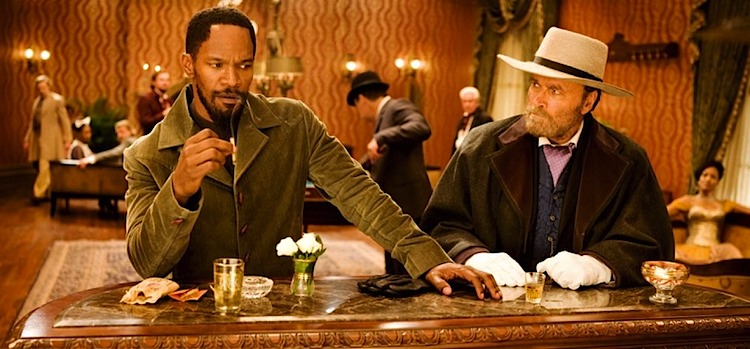
When watching Unchained, one gets a sense Schultz and Candie represent two sides of the auteur’s persona. Schultz is the white trickster he wants to be, finding acceptance from African Americans through social conscience and hipster sensibilities. Yet, if you peeked into the dark recesses of his subconscious, one might find fantasies of the master slinking off to the slave quarters late at night.
While he looks a bit like Christopher Guest, Christoph Waltz thoroughly dominates the film as Schultz. Conveying a charismatic sense of danger, he is the only character who consistently surprises viewers, while serving as the film’s figure of tolerance. Waltz also has the perfect flair for Tarantino’s dialogue, which is razor sharp as ever. In fact, the period setting is something of a blessing, forcing him to avoid ironic pop culture references.
Jamie Foxx is appropriately flinty when going toe-to-toe with his racist antagonists, but lacks Waltz’s dynamic screen presence. Cruel but disturbingly subservient, Samuel L. Jackson’s Stephen is one of the most distinctive villains of the year. Yet on some level, it is oddly problematic that Unchained invites the most scorn for an African American character. Conversely, Leonardo DiCaprio and his pasted on mustache are simply ridiculous as Candie. Completely lacking gravitas or menace, he looks like he should have a surf board under his arm rather than a whip.
Tarantino delivers some spectacular mayhem and some wickedly clever lines. Still, there is a leering tone to the film that feels wrong when the bullets are not flying. Regardless, there is enough attitude and inventive bloodshed to satisfy the filmmaker’s fans, as well as a cool cameo from the original Django, Franco Nero – but the running time of one hundred sixty-some minutes is just excessive. By comparison, Corbucci’s Django unleashes just as much mayhem in nearly half the time. Recommended strictly for connoisseurs of violent exploitation films and spaghetti westerns, Django Unchained opens wide this Christmas.
LFM GRADE: B-/C+
Posted on December 21st, 2012 at 10:29am.
